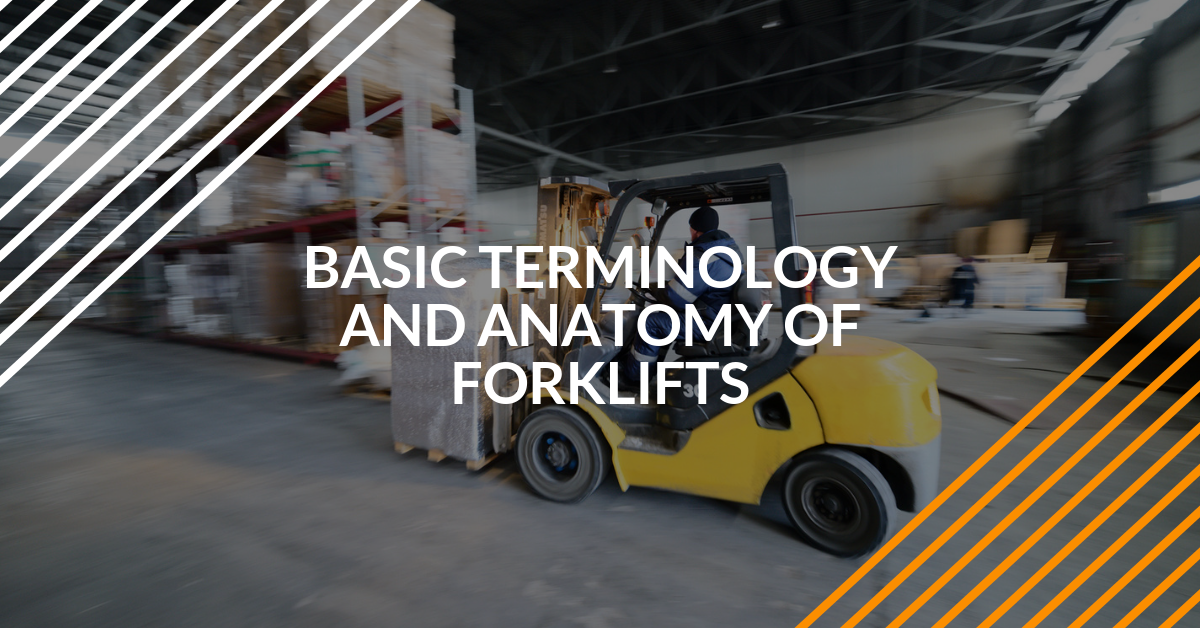Get to Know Your Forklift Better: Basic Terminology and Anatomy of Powered Industrial Trucks

How well do you know your forklift? It’s a question that’s worth asking – and answering honestly – because the better you know your equipment, the better you’ll become at operating it.
Think about a racecar driver or jockey. The best drivers and jockeys certainly know their “equipment,” in this case, cars and horses. They’re trained to detect the smallest problems, from a minor exhaust issue to a slight limp in a horse’s gait.
Well, forklift drivers aren’t as glamorous or well-known as Indy car racers or jockeys in the Kentucky Derby, but they still should know the basic parts and terminology of forklifts. Ignorance breeds accidents. Get to know all the parts of a forklift, and you’ll enjoy a more efficient and – more importantly – a safer working environment.
Once you understand what makes your forklift run efficiently, you’re better prepared to:
• Suggest maintenance work
• Talk intelligently with repair staff about your equipment
• Detect minor issues that could become major problems
• Perform basic maintenance yourself (always check with your supervisor, if you’re not an authorized maintenance technician)
• Help order parts
• Operate any forklift safely
• Know about different forklift terminology
• And much more
Forklift maintenance is one of the most important parts of a safe, well-run workplace. Knowing about forklift terminology, parts, and basic operational facts will help you and your co-workers get the most out of your powered industrial trucks.
FORKLIFT ANATOMY: BASIC PARTS OF A FORKLIFT
In the medical field, Gray’s Anatomy describes different parts of the human body. This information is of great interest to doctors, clinicians, nurses, and other medical professionals. To understand certain diseases and conditions, it helps to know all about the human body. Knowledge is power.
The same goes for the parts of a forklift. The more your employees (or you) know about forklift anatomy and different types of forklift terminology, the more likely you’ll have a safer workplace. Wouldn’t it be great if there was a Gray’s Anatomy for forklift terminology?
An “official” manual for parts of a forklift doesn’t exist as a definitive volume, but that doesn’t mean our powered industrial truck experts here at ForkliftCertification.com won’t try! What follows is a basic summary of forklift anatomy – the components, systems, and accessories that makeup all the parts of a forklift.
• Cab – ahh, home sweet home! The cab is where the operator makes all the magic happen. The cab contains the main forklift controls, including the steering wheel, lift controls, safety lights, and much more. In forklift anatomy, the cab is also referred to as the control cabin.
• Overhead guard – this part is directly above the cab and prevents injury from falling cargo, weather, and other distractions. If there are any issues with your overhead guard, get it fixed right away – it could be a life-saver!
• Counterweight – for most forklifts, including counterbalance lifts, this is the part of the equipment that prevents tip-overs. When you’re carrying a super-heavy load, the counterweight keeps the forklift from falling over forwards.
• Fuel tank – this obviously named element holds the fuel. But it might be going out of style, as electric forklifts become more popular. Electric forklifts don’t require a fuel tank, which allows manufacturers more freedom in forklift design.
• Undercarriage – similar to a regular automobile, the undercarriage is the underside of the main forklift body, including the cab (see above). One of the (literally) most overlooked parts of a forklift, it’s important to inspect this area often, since debris and other materials can get stuck here, which can impact the performance of steering mechanisms, tires, and other parts.
• Forks – this part gives the forklift its name. The forks handle cargo, lift pallets, bring the material down from shelves, and much more. Even novices to forklift anatomy know where the forks are.
• Wheels – rubber, composite material, and much more…a forklift’s tires are critical for handling, safe operation, speed maintenance, and proper load handling, just to name a few. The wheels are four of the most important parts of a forklift.
• Hydraulic lift cylinder – without this part, your lift would be useless. The hydraulic lift cylinder is responsible for the total vertical lift of your powered industrial truck.
• Mast – working in tandem with the hydraulic lift cylinder, the mast moves the forks up and down.
• Backrest extension – located between the mast and forks, this part helps stabilize pallets, boxes, and other cargo.
UNDERSTANDING FORKLIFT ANATOMY AND COMPLETE, OSHA-APPROVED TRAINING: A WINNING FORMULA FOR SAFETY!
Understand these basic parts, and your employees are well on their way to becoming better forklift drivers. To avoid accidents and increase safety, you need to know about the different parts of a forklift, and you also need OSHA compliant training. Knowledge without the basic application of proper safety practices means nothing. ForkliftCertificaiton.com has the courses you and your company need to become compliant.
We’re here to help you learn about safety, forklift terminology, and much more. OSHA compliance, much like forklift anatomy, is easier than you think – especially when you have the certified online safety experts in your corner. Sign up today!